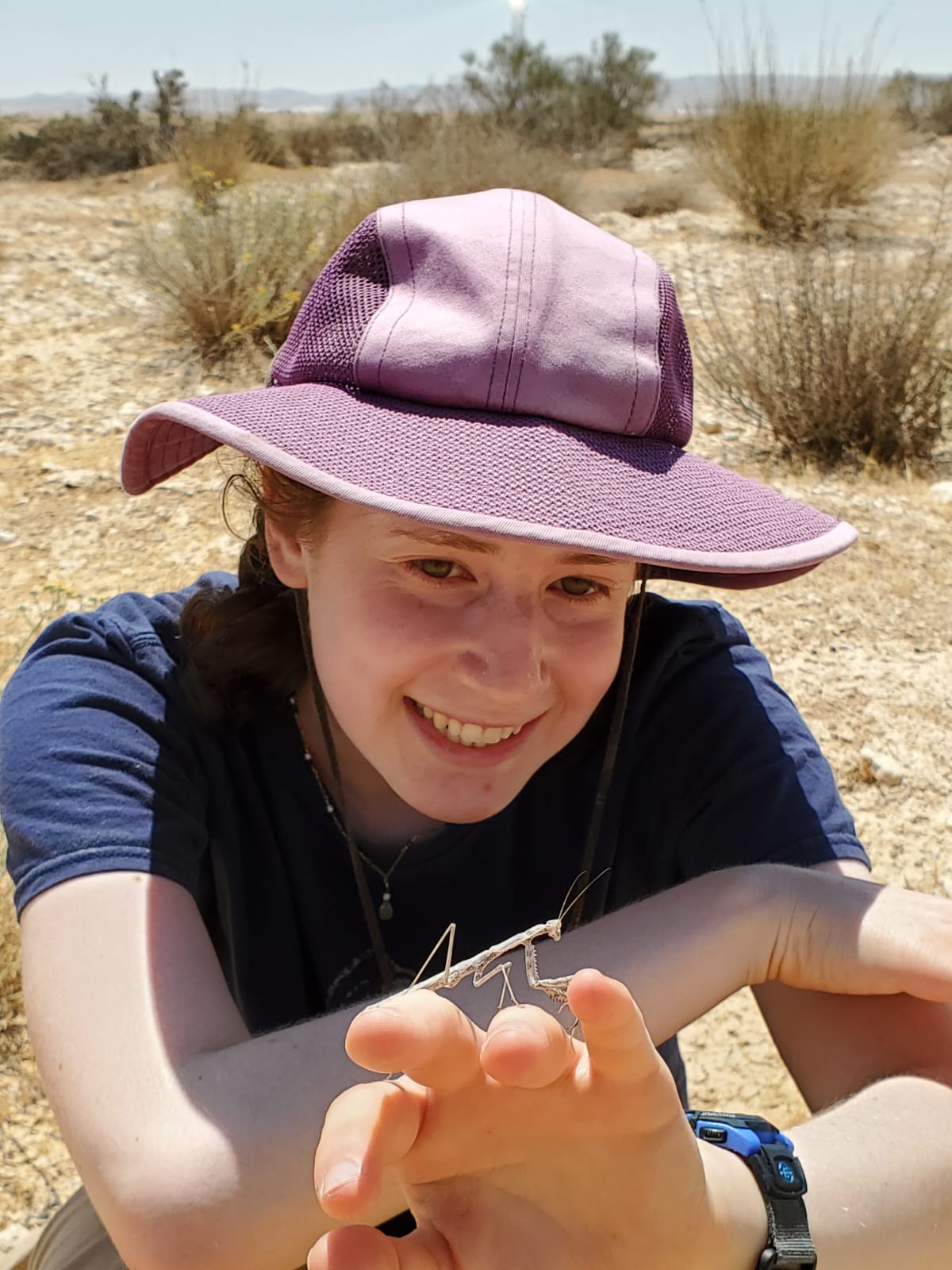Lab and field: A love for insects inspired an undergrad’s research — which was just published
Leah Rosenheim explores color changes in praying mantises

In Leah Rosenheim’s California hometown, praying mantis
Rosenheim, the daughter of an entomologist, found them fascinating. During her senior year of high school, she noticed that the native species Stagmomantis limbata came in various colors, often closely matched to nearby plants.
“There was a light yellow one on a sunflower, and another one — which was brown — on a brown plant. It made me wonder: What’s going on?” she recounted.
Her father suggested that she conduct an experiment to answer that question. So, she did — and recently had the results published in the journal Ecology and Evolution. Her co-authors include her father, Jay Rosenheim, and Michael Maxwell, who did his doctoral dissertation on the same praying mantis species at the University of California, Davis
“While many Binghamton undergraduates publish scientific papers, it is rare for those papers to be truly led by the students rather than faculty. Leah did this very much on her own, which is a huge accomplishment,” said Binghamton University Associate Professor of Biological Sciences Thomas H.Q. Powell.
From brown to green and in-between
To start the project, Rosenheim collected egg cases from her neighborhood in Davis; when the mantises hatched, they were raised in either green or brown containers to determine whether they change color. She also assessed whether they choose
It turns out that
“They do change color to match their background, but it was very messy. There was a significant result, but it wasn’t perfect,” she explained.
During a gap year between high school and college, she read the relevant literature, learned how to analyze data and started writing. Now a senior majoring in biological sciences, Rosenheim continued to work
These days, she is a member of Powell’s biology lab, where she is investigating whether genetics play a role in how long apple maggot flies over-winter in the soil before emerging as adults. For most, the process takes eight months, but some undergo another full year in the diapause state, she explained.
After graduation, Rosenheim plans to take a year off to go to Israel and potentially do some part-time research. After that, she plans to attend graduate school in biology, she said.
The praying mantis project turned out to be an excellent introduction to research, from beginning to end — as well as a study in persistence.
“There are a lot of points in a project where you can get stuck, and you feel like you’re never going to get it done, but you have to keep chugging along,” Rosenheim said.



